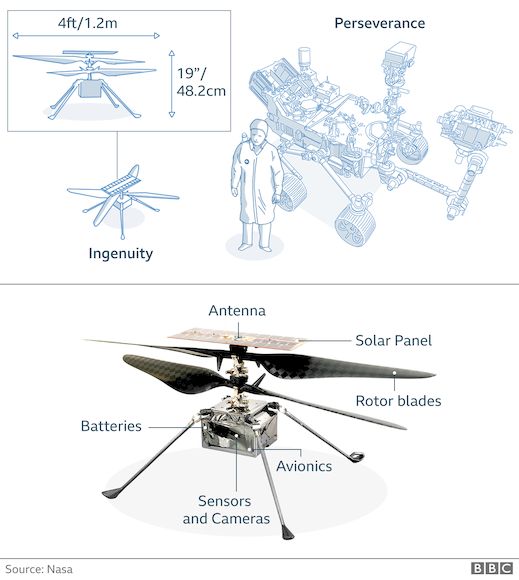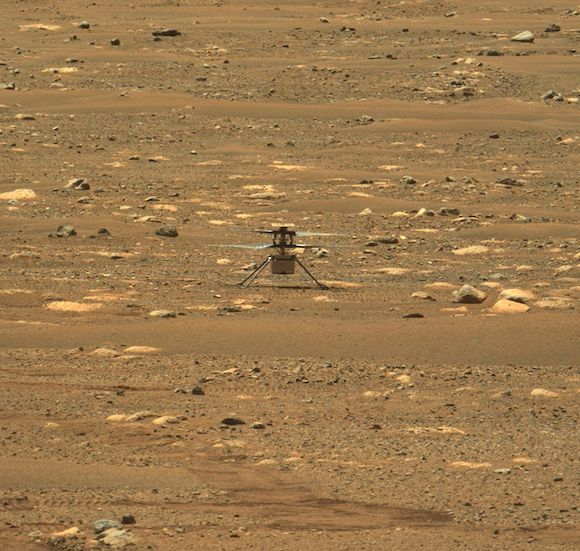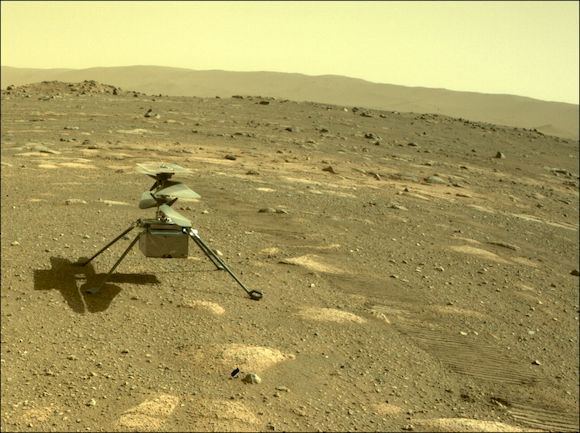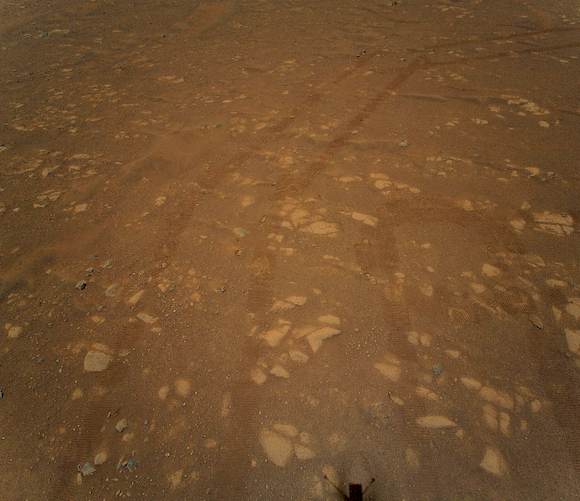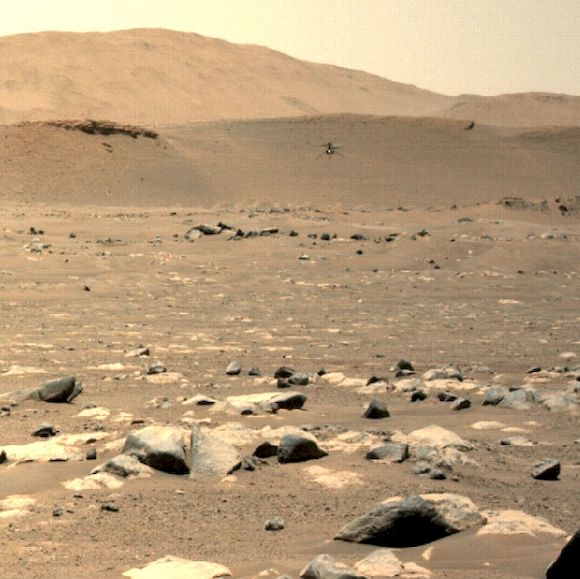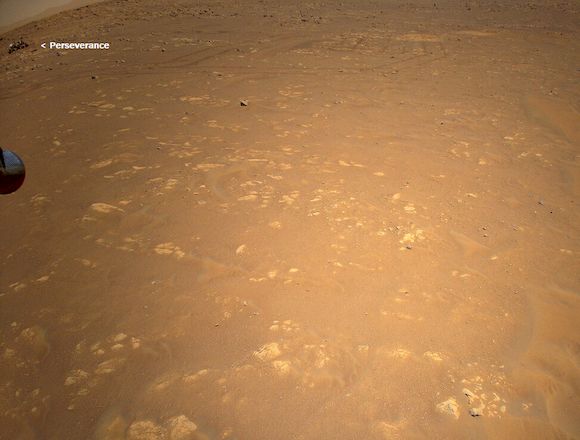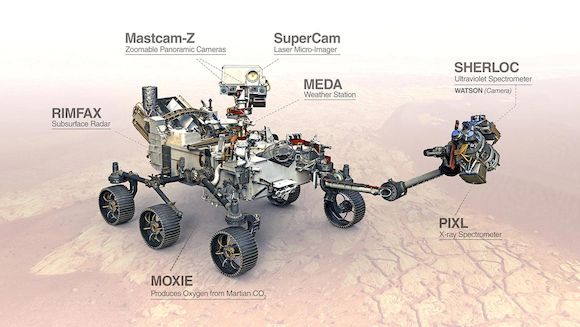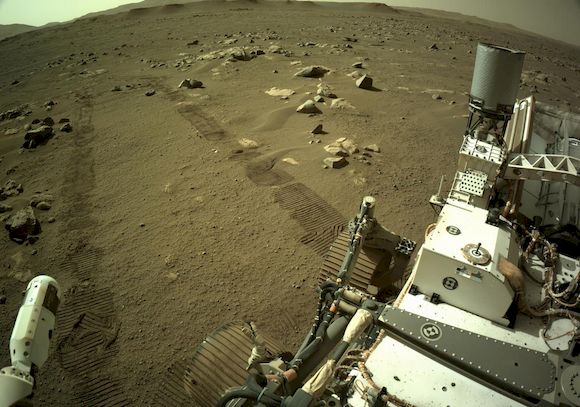As of writing (April 28th), Ingenuity has successfully completed three sorties into the thin Martian air, the first on April 18th, another test flight on April 22nd with the third on April 25th. On the first two flights Ingenuity spent less than one minute off the ground. The third flight was of longer duration in which Ingenuity flew further and faster than even test flights carried out on Earth. It is 117 years after the Wright brothers succeeded in making the first flight on Earth, NASA’s Ingenuity helicopter has now succeeded in performing this on another world. Suitably, the small area of Martian ground chosen by NASA for the test flights will now be known as Wright Brothers Field. On that historic first flight on Mars, Ingenuity hopped just 3 meters off the Martian surface, hovering for around 30 seconds before landing again.
For the second flight test on April 22nd, Ingenuity took off at the same local time, but topped out 16 feet (5 meters) above the surface this time, performing a tilting motion as well as thrusting sideways for 7 feet (2 meters), all in 52 seconds. For the third flight on the 25th; around 09:30hrs BST, Ingenuity again rose to 5 meters, it then zipped downrange 164 feet (50 meters), reaching a top speed of 6.6 feet per second (2 meters per second). The flight lasted 80 seconds. As with the previous tests, the Perseverance rover obtained imagery of the flight attempt from 211 feet (64.3 meters) away using its Navcam and Mastcam-Z imagers.
Ingenuity is due to fly again on April 29th. Flight Four sets out to demonstrate the potential value of an aerial perspective. The flight test will begin with Ingenuity climbing to an altitude of 16 feet (5 meters) and then heading south, flying over rocks, sand ripples, and small impact craters for 276 feet (84 meters). As it flies, the rotorcraft will use its downward-looking navigation camera to collect images of the surface every 4 feet (1.2 meters) from that point until it travels a total of 436 feet (133 meters) downrange. Then, Ingenuity will go into a hover and take images with its color camera before heading back to Wright Brothers Field. Airborne time is expected to be 117 seconds, one for each year since the Wright brothers first flight. Airspeed will also increase from 2 meters per second to 3.5 (4.5 mph to 8), and more than doubling our total range. Just in, the 4th flight failed to take place, details of why have yet to be released by NASA, but another attempt is expected once data has been analysed.
Even though gravity on Mars is about one third that of Earth’s, the helicopter must fly in an atmosphere with only about 1% of the density at Earth’s at the surface. So information gleaned from these test flights and those to come, will prove invaluable for future Mars missions that use next-generation helicopters, adding another dimension to their explorations.
The growing list of “firsts” for Perseverance, also now includes converting some of the Red Planet’s thin, carbon dioxide-rich atmosphere into oxygen. A toaster-size, experimental instrument aboard Perseverance called the Mars Oxygen In-Situ Resource Utilization Experiment (MOXIE) accomplished the task on April 20th, the 60th Martian day, or sol, since the mission landed. Eventually it is hoped that isolating and storing oxygen on Mars could be used to help power rockets that could lift astronauts off the planet’s surface as well as to provide breathable air for astronauts themselves.
The first oxygen production was very modest- 5 grams, equivalent to about 10 minutes worth of breathable oxygen for an astronaut. MOXIE is designed to generate up to 10 grams of oxygen per hour. MOXIE is expected to extract oxygen at least nine more times over the course of a Martian year (nearly two years on Earth).
The space to watch is https://mars.nasa.gov/mars2020/
Or whitby-astronomers.com
All images - NASA/Caltech/JPL
- Log in to post comments

